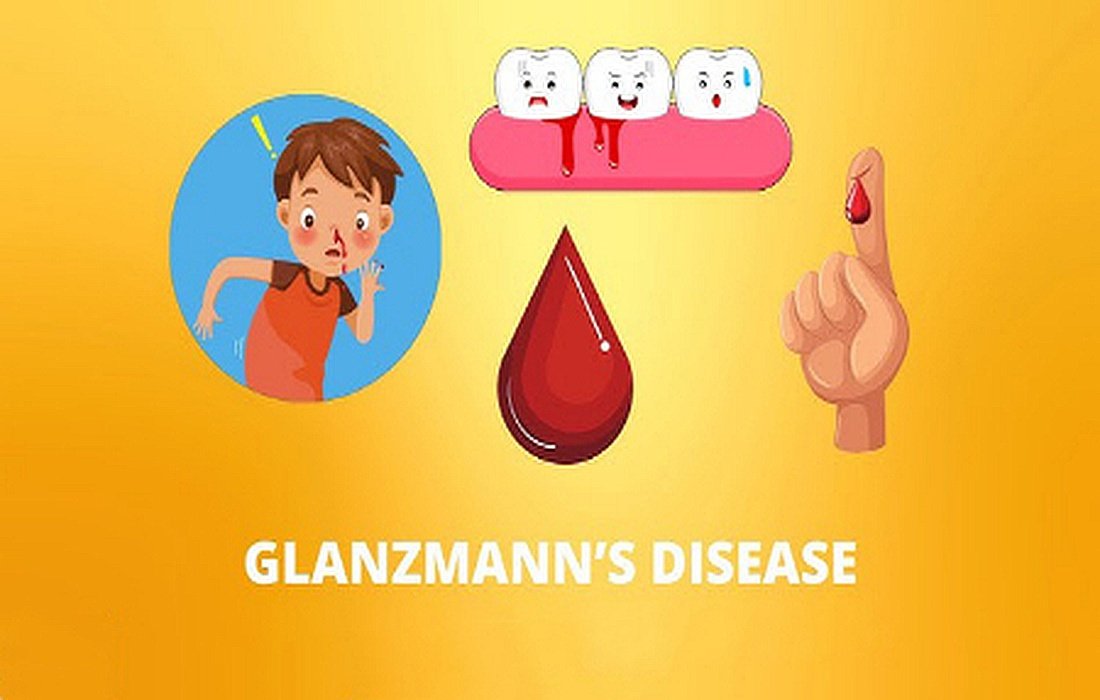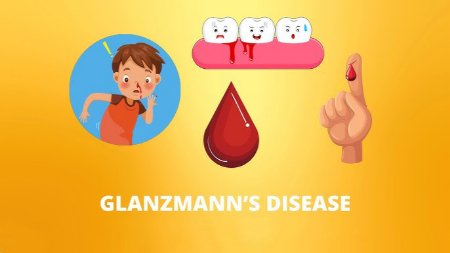
Glanzmann’s thrombopathy is an inherited disease.
Glanzmann’s thrombopathy; an inherited disorder that disrupts blood clotting.
Glanzmann’s thrombopathy (GT) is a chronic (long-lasting) disease that causes easy bruising and bleeding. It involves a problem with your platelets, the small blood cells that help your blood clot to stop bleeding. If you were born with a genetic mutation that causes GT, you may eventually need platelet transfusions to aid in blood clotting.
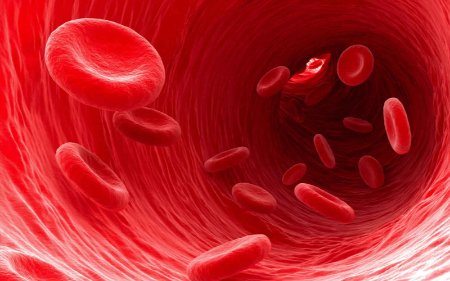
Glanzmann’s disease leads to prolonged and severe bleeding.
What is Glanzmann’s thrombopathy?
Glanzmann’s thrombopathy (GT) is a chronic disease that causes easy bruising and bleeding. It involves a dysfunction of your platelets, the small blood cells that help your blood to clot.
If you have GT, a genetic mutation prevents your body from producing a key protein that your platelets need to form clots. As a result, clots form more slowly, leading to increased bleeding. The severity of bleeding can vary from person to person. It might be mild enough to manage at home or severe enough to require emergency care.
How common is Glanzmann’s thrombopathy?
Glanzmann’s thrombopathy is rare. Medical experts estimate that only about 1 person in every 1 million is born with GT worldwide. This number is closer to 1 in every 200,000 in communities where the genetic mutation runs in families. Newborns are more likely to be born with GT in some Middle Eastern countries, Newfoundland and Labrador in Canada, and within the Romani community in France.
What are the symptoms of Glanzmann’s thrombopathy?
If you have GT, you may bleed more than someone else with a similar injury. You might also experience unexpected bleeding without an obvious reason. Symptoms of Glanzmann’s thrombopathy include:
• Easy bruising
• Bleeding gums
• Frequent nosebleeds (epistaxis)
• Purple spots or patches on your skin (purpura)
• Spots that are purple, brown, or red on your skin (petechiae)
• Heavy menstrual bleeding (menorrhagia)
With GT, internal bleeding is much less common than bleeding from your skin (after injury, such as cuts) or mucous membranes (like the lining of your nose and mouth).

Women with GT may have heavier menstrual bleeding.
What causes Glanzmann’s thrombopathy?
Babies born with Glanzmann’s thrombopathy inherit a mutation (or error) in the genes that control the production of integrin alpha IIb/beta 3, a protein that helps platelets to clot. To have GT, you inherit a mutated gene from both parents. This type of inheritance is called autosomal recessive.
Most parents do not realize they carry this mutation because two copies of the mutated gene are necessary to show symptoms. Carriers have one normal gene and one mutated gene.
If both parents are carriers, they have a 25% chance of having a child with GT.
Acquired Glanzmann’s thrombopathy
Some people develop GT later in life, but this is very rare. While it can happen, medical experts still classify Glanzmann’s thrombopathy as an inherited bleeding disorder. With acquired GT, your body produces antibodies that attack integrin alpha IIb/beta 3. Many conditions and even certain medications can potentially trigger this response. However, the results remain the same. Without enough functional protein, your platelets take longer to form clots.
What are the complications of Glanzmann’s thrombopathy?
Severe menstrual bleeding can lead to iron deficiency anemia. In severe cases, GT can cause serious (and even life-threatening) bleeding during significant life events where bleeding is common, such as childbirth and surgery.
If GT is diagnosed, your doctor can take steps to prevent these complications.
How is Glanzmann’s thrombopathy diagnosed?
Doctors perform tests to diagnose GT, usually in childhood. As a parent, you may take your child to see a doctor due to easy bruising or frequent, prolonged nosebleeds. This may happen during significant life events, such as when your child:
• Is circumcised.
• Loses their first baby tooth.
• Has their first period.
Over 80% of people with Glanzmann’s thrombopathy are diagnosed before the age of 14. Most are diagnosed before they turn 5. Adults with GT may not realize they have a problem until they experience an injury, such as an accident.
What tests will be done to diagnose GT?
Doctors use blood tests to diagnose Glanzmann’s thrombopathy. The tests can reveal the following issues:
• Your platelets: A complete blood count (CBC) can show whether you have a normal platelet count. A peripheral blood smear can indicate whether they look unusual.
• How your blood clots: Multiple tests, including prothrombin time (PT) and activated partial thromboplastin time (aPTT), can show how quickly and effectively your blood clots. They can help doctors rule out more common bleeding disorders that can be mistaken for GT, such as von Willebrand disease or Bernard-Soulier syndrome.
• Your integrin alpha IIb/beta 3: Tests such as flow cytometry and monoclonal antibody panels can show whether you have sufficient (or faulty) integrin alpha IIb/beta 3. They can also detect antibodies that may attack this protein.
• Your genes: Genetic tests can determine if you have mutations in the genes that cause GT. These genes are ITGA2B and ITGB3.
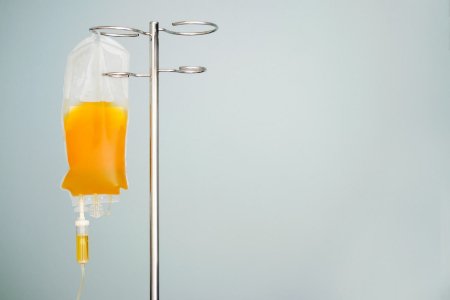
Platelet transfusion is one of the treatments for GT.
How is Glanzmann’s thrombopathy treated?
If diagnosed with GT, your doctors will advise you on how to reduce the risk of bleeding. You will likely work with a blood disorder specialist known as a hematologist. Aside from prevention, treatment depends on the severity of your bleeding.
Mild to moderate bleeding
Treatments for mild to moderate bleeding include:
• Compression: Your doctor can teach you how to apply pressure to slow bleeding from a wound or stop a minor nosebleed. For severe nosebleeds, your doctor may place a material like gauze or foam in your nose to stop the bleeding (nasal packing).
• Medications: You may need a medication to help your blood clot, such as fibrin sealant (glue), gelatin foam, topical thrombin, and antifibrinolytic agents.
Severe bleeding
Severe bleeding with Glanzmann’s thrombopathy requires emergency care. Treatments include:
• Platelet transfusion: You may need a platelet transfusion to stop severe bleeding or to prevent bleeding before a major surgery or childbirth. During a transfusion, you receive healthy platelets from a donor.
• Red blood cell transfusion: If you lose a lot of blood, you may need a red blood cell transfusion to restore your levels.
• Recombinant factor VIIa (rFVIIa): You might need this medication if you do not qualify for platelet transfusions.
• Hematopoietic stem cell transplant: A stem cell transplant is the only potential cure for GT. This may be an option in severe cases of GT where no other treatment has worked. During this procedure, a doctor will inject stem cells from a donor into your body.
Ways to take care of yourself
• Maintain oral health: Brushing and flossing daily and visiting the dentist for regular checkups can reduce the risk of gum bleeding.
• Take good care of your nose: Keeping your nasal lining moist can reduce the risk of nosebleeds. You can use a humidifier, nasal spray, or Vaseline inside your nose to prevent it from drying out too much.
• Manage heavy menstrual bleeding: Using hormonal birth control methods can help prevent heavy menstrual bleeding.
• Wear a medical alert bracelet: Always carry an identification that informs emergency staff that you have a bleeding disorder. This can save your life in a medical emergency.
• Have a plan for bleeding episodes: Know when to care for yourself at home and when to see a doctor right away. Be sure you know who to call and where to go, so there’s no delay in receiving care.
When should I see my doctor?
If you or your child show symptoms of easy bleeding, schedule an appointment with your doctor. Bruising and nosebleeds are common. But if the symptoms are frequent and it takes a long time for the bleeding to stop, contact a doctor.
When should I go to the emergency room?
If your bleeding doesn’t stop, including heavy menstrual bleeding, go to the emergency room instead of scheduling an appointment. Significant signs include:
• A nosebleed that lasts for an hour.
• Bleeding from two or more tampons or pads every hour for two hours or more.
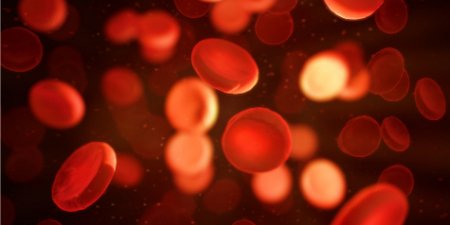
Living with GT requires planning and special care.
Frequently Asked Questions about Glanzmann’s disease
1. Do people with GT have a normal platelet count?
Typically, the platelet count in Glanzmann’s thrombopathy is normal. The issue is not with the number of platelets. Instead, the platelets cannot clump together effectively due to a problem with the protein that allows them to connect with each other.
2. What is the difference between Glanzmann’s thrombopathy and Bernard-Soulier syndrome?
Both Glanzmann’s thrombopathy and Bernard-Soulier syndrome (BSS) are rare genetic disorders that involve issues with how your blood clots. However, they involve different genetic mutations. The specific problems with the platelets also differ. Individuals with BSS tend to have fewer large, abnormal platelets.
3. What are my chances of passing GT to a child?
If you and your partner are both carriers of the Glanzmann’s thrombopathy mutation, there is a 25% chance of passing the disease to your child. In other words, out of every four children, one might have the disease.
4. If I decide to get pregnant, is genetic testing recommended?
If you plan to get pregnant, genetic testing for you and your partner is highly recommended. This testing helps you determine your carrier status and, if necessary, receive genetic counseling. A genetic counselor can help you better understand the disease and available options.
Final words
Glanzmann’s thrombopathy is a lifelong condition that you and your hematologist must monitor. With GT, there is no way to predict the severity (or mildness) of your bleeding. Regardless, actions to reduce the risk of bleeding episodes can help maintain your health. Therefore, platelet transfusion can also be beneficial if your GT is severe. You may have no control over whether you were born with this disease, but you have options to manage it so it does not interfere with your quality of life.
Compilation:Health section of SelMagz



